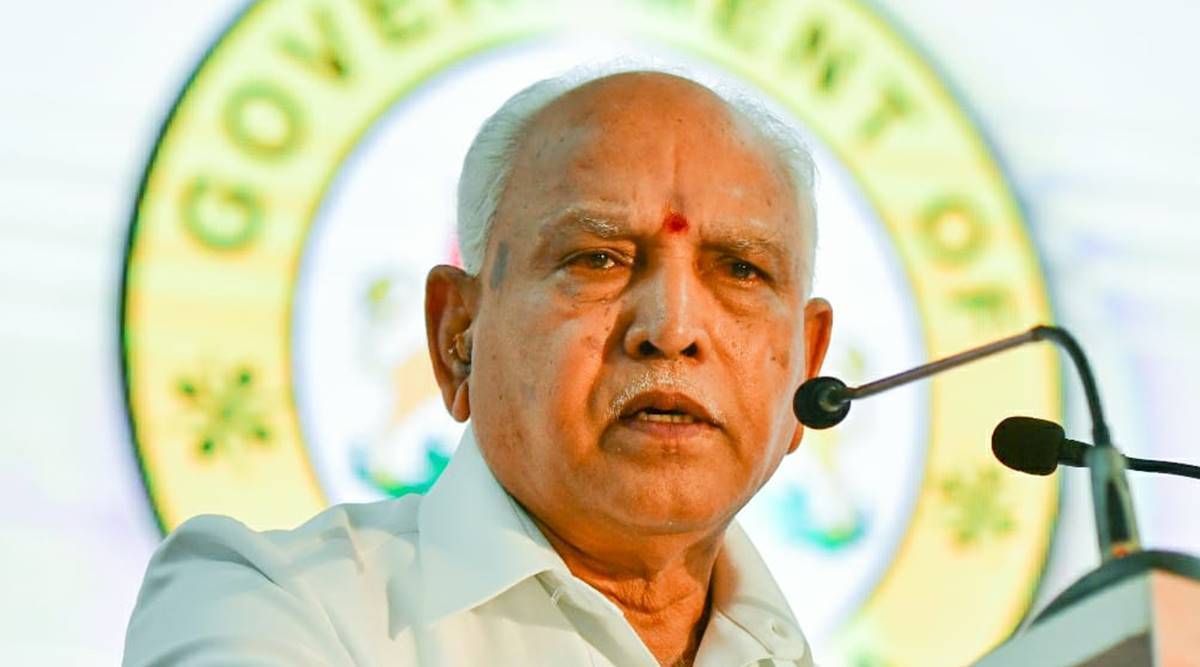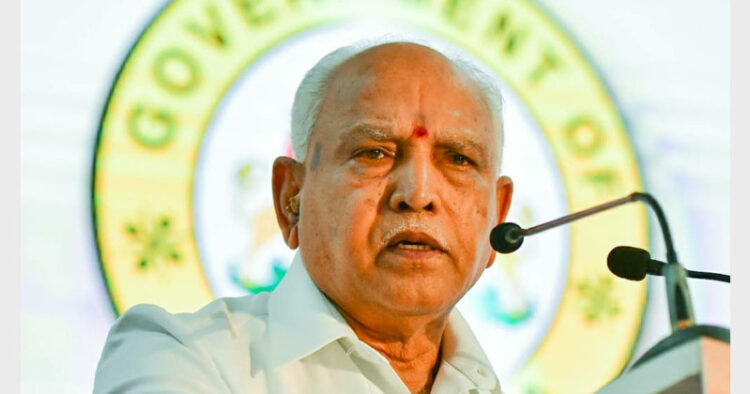
New Delhi: B S Yediyurappa has tendered his resignation as the Chief Minister of Karnataka. The BJP is gearing up itself for the crucial battle of 2023 in the southern state – which has been its ‘first’ state to give the taste of greater acceptability and power in the south of Vindhayas. The saffron party certainly owes it to the elderly shoulders of BSY to establish itself as a pan-Karnataka party.
All ensuing electoral battles in large states – Uttar Pradesh in 2022, Karnataka in 2023 and later in Madhya Pradesh, Rajasthan and Chhattisgarh in Dec 2023 would have an impact on the big battle of 2024. For BJP, it all started in Karnataka in 1991 when it first bagged four seats. In 2004, it had emerged as the single largest party winning 79 of the 224 seats. The Congress tally was just 65 and JD(S) had won 58.
As compared to previous polls, the BJP gained 35 seats and JD(S) got 48 seats more than last time. The Congress tally came down by 67 seats from 132 to a modest 65.
In between, BJP allied with JD(S) and the family of Gowdas for a brief period. The 20 months regime gave a credible regime wherein H D Kumaraswamy was Chief Minister between Feb 3, 2006 to Oct 9, 2007 and B S Yediyurappa was the deputy chief minister. But then the JD(S) breached the contract and declined to hand over chief ministership to BJP.
This was a ‘great betrayal’ of the Gowdas and the martyrdom of BSY helped the saffron party make significant ground in 2008 assembly polls. The saffron party came to power under BSY. But political dynamics later took BSY out of the party and he floated his own outfit, Karnataka Janata Paksha.
The 2013 assembly polls were disastrous for both BJP and BSY. The Congress formed government under Siddaramiah. In 2014, BSY merged his party with the BJP and successfully contested 2014 Lok Sabha polls from the prestigious Shimoga parliamentary constituency. Then came in the fiercely contested polls of 2018 where BJP riding on a strong pro-change and pro-Narendra Modi wave emerged single largest party, but missed the majority magic mark by a whisker. Yediyurappa’s government was short-lived – just two days – and Kumaraswamy came to power with Congress support.
In 2019 Lok Sabha polls, the people of Karnataka again reposed their faith in BJP and Narendra Modi giving the saffron party as many 25 seats out of 28.
The JD(S)-Congress government fell in July 2019 and BSY became CM again; and now finally decided to quit on July 26. Now, gearing up for 2023 battle, the BJP has changed its chief minister and all eyes will be on the new man.
In the end, the fact that BJP’s Lotus bloomed in Karnataka was no small feat as for long the saffron outfit has been largely described as a North Indian party.
Caste is an important factor in Karnataka politics. The BJP has been banking on BSY and his much influential Lingayat support base. This social group represents about 10 per cent of total population. JD(S) of Gowda family draws strength from Vokkaligas as it has about 8 per cent of state’s 63 million people.
In addition, the Congress party’s Siddaramiah belongs to the Kruba caste of shepherds and has about 9 per cent vote share.
Tail piece:
There is a paradox of Karnataka state polls and the final outcome in the battle for Lok Sabha. In 2009, BJP lost the general elections within months it put up an exemplary show in 2008 May assembly polls. In 2013, Congress captured power in Bengaluru but UPA lost miserably in 2014 Lok Sabha battle that brought Narendra Modi to the centre stage of Indian polity.
In 2019 Lok Sabha polls, of course, the BJP won 25 seats and many Congress doyens including the likes of Mallikarjun Kharge were humbled. In Tumkur, former Prime Minister H D Deve Gowda (JD-S) lost to BJP’s G. S. Basavaraj.
The BJP vote share jumped by 8.38 per cent to 51 and Congress share nosedived by about 8 per cent to 31 per cent.
The JD(S) vote share also dropped to 8.12 per cent by 1.33 per cent.













Comments